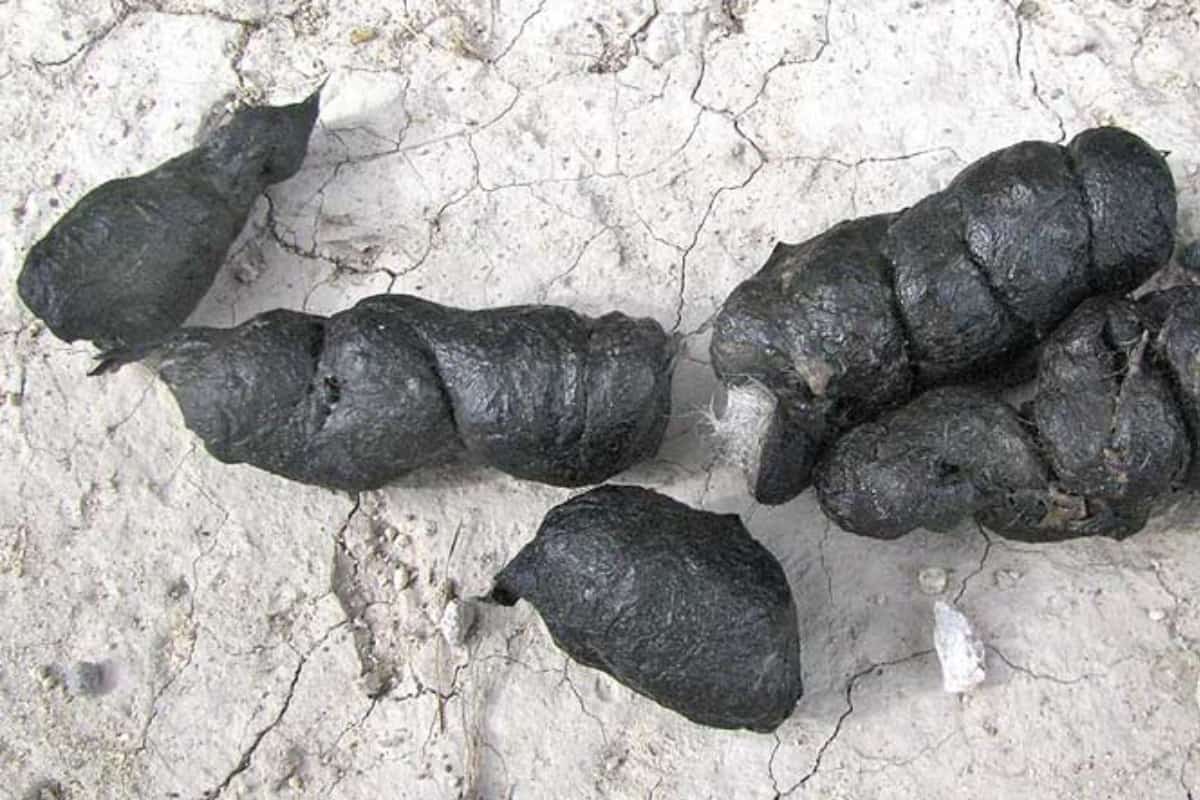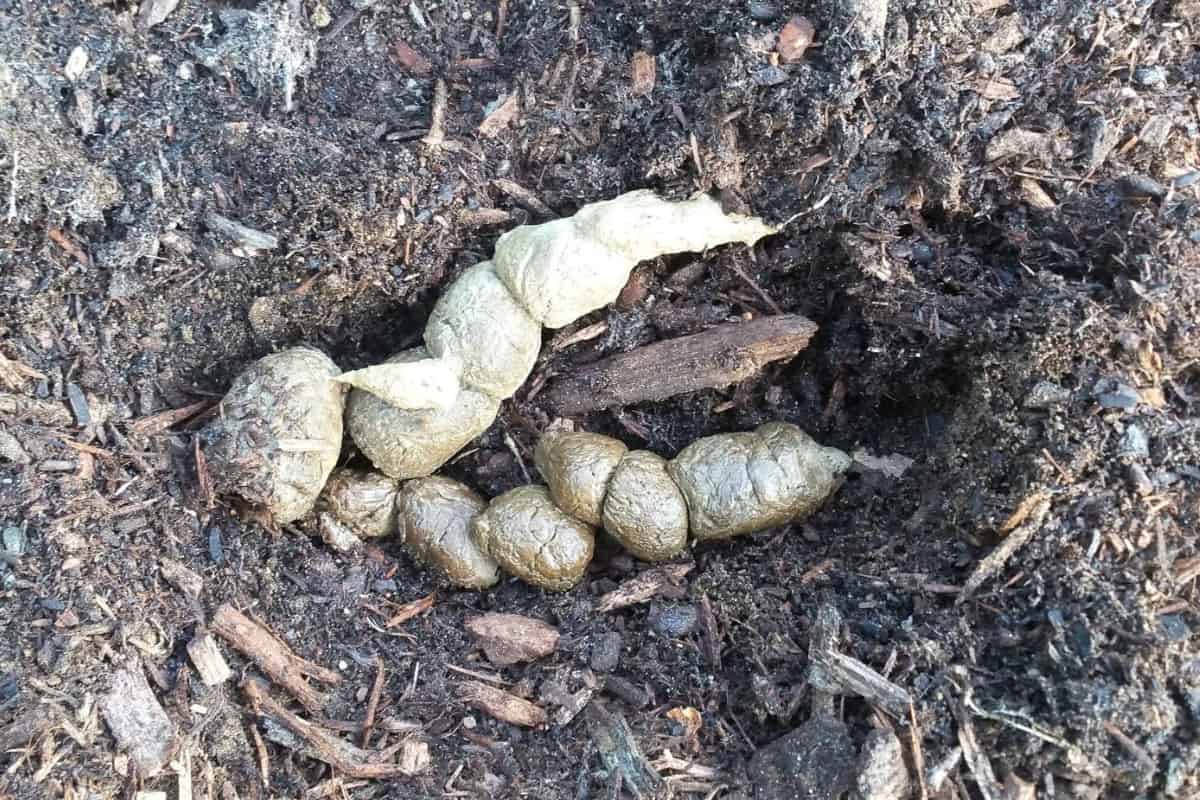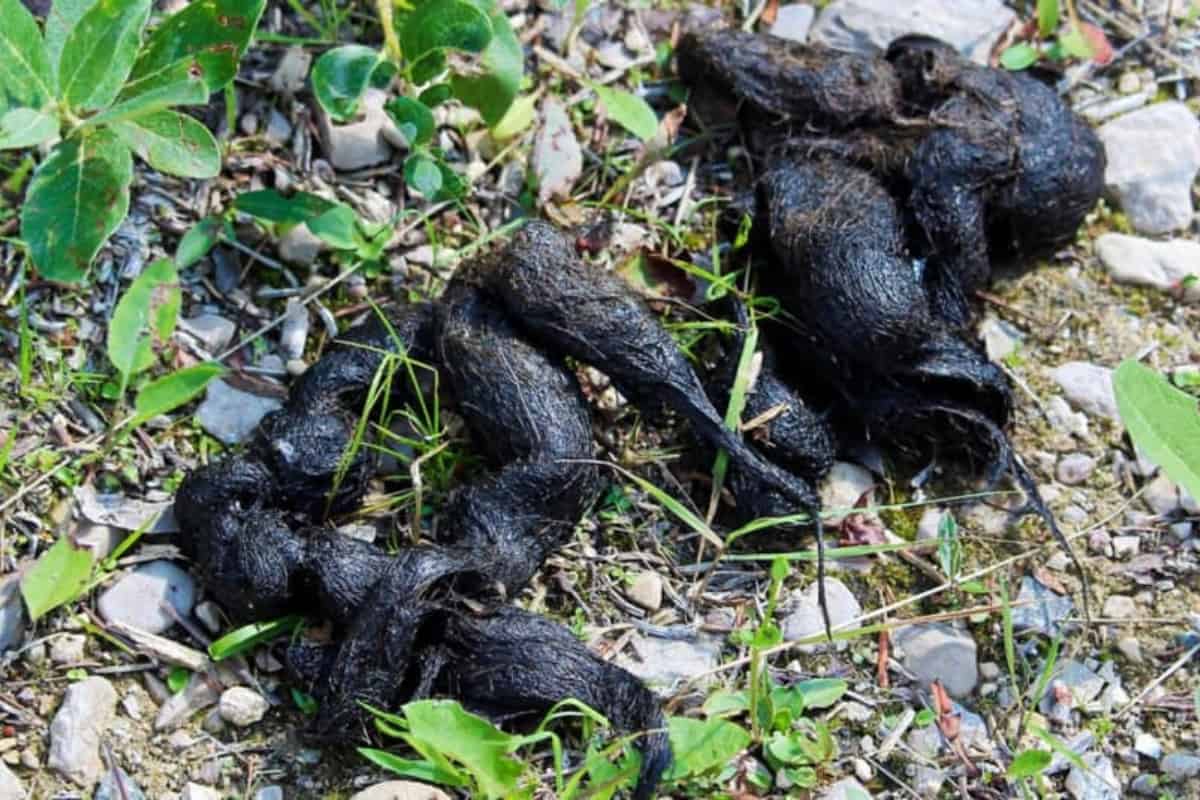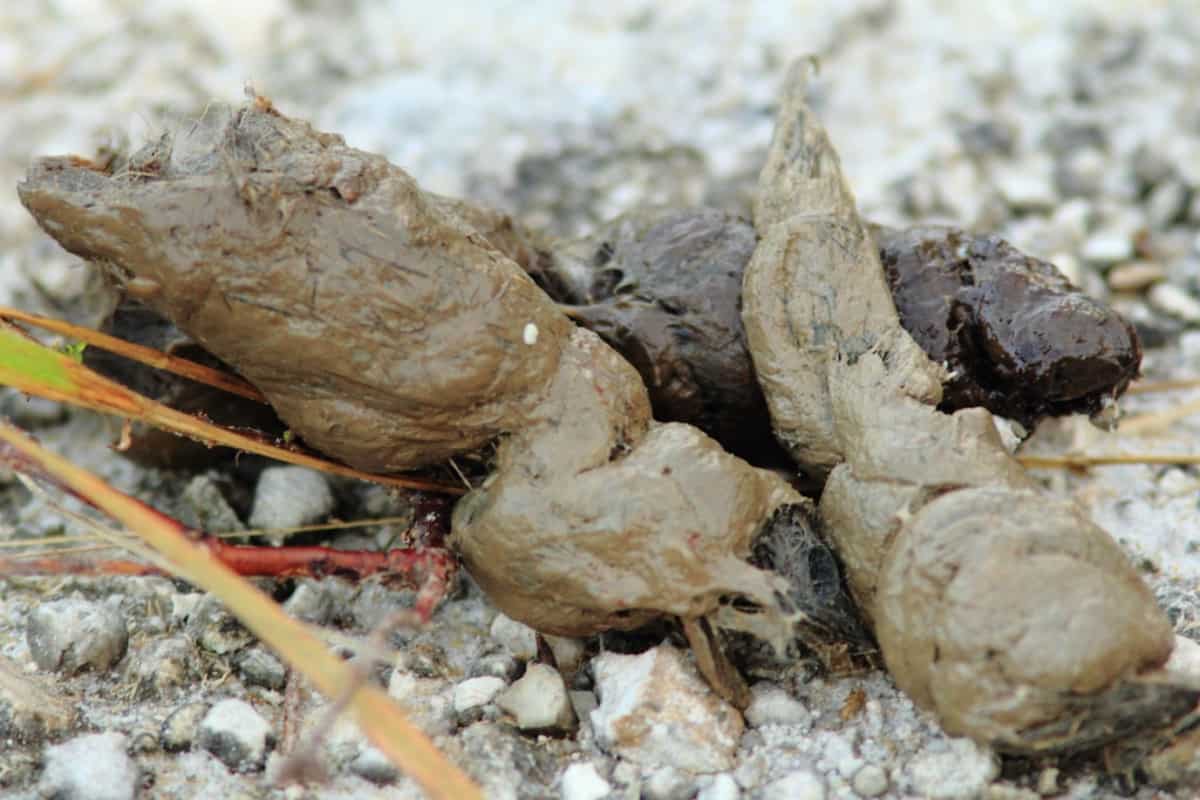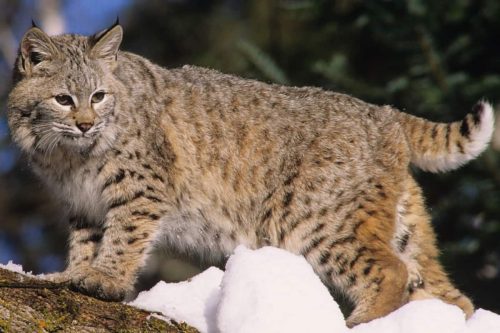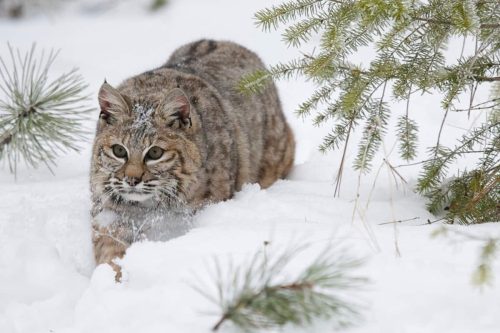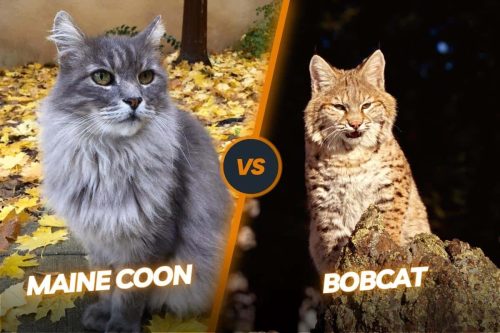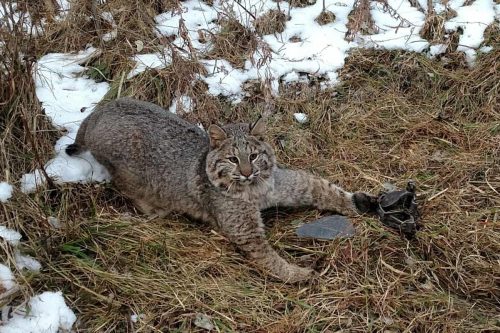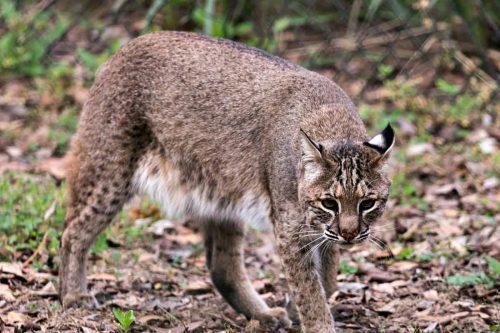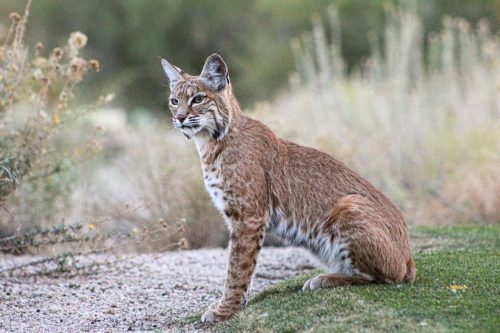What Does Bobcat Poop Look Like? | Bobcat Scat Identification
Bobcat or Lynx Rufus is a medium-sized wild cat that is mainly found in the North American region. It is easily recognizable from its distinctive bobbed tail. These cats like to eat mice, rabbits, and deer. Bobcats are solitary animals by nature and you can only witness these cats between the dawn and dusk hours. It means it is extremely difficult to confirm their presence in your neighborhood.
However, bobcat Poop might be the only thing that can confirm their location anywhere. Being territorial animals, they love to mark their territory with the help of their poop or urine. In this article, we are going to explain in detail what does bobcat poop look like and how you can identify scat by comparing it with the droppings of other animals.
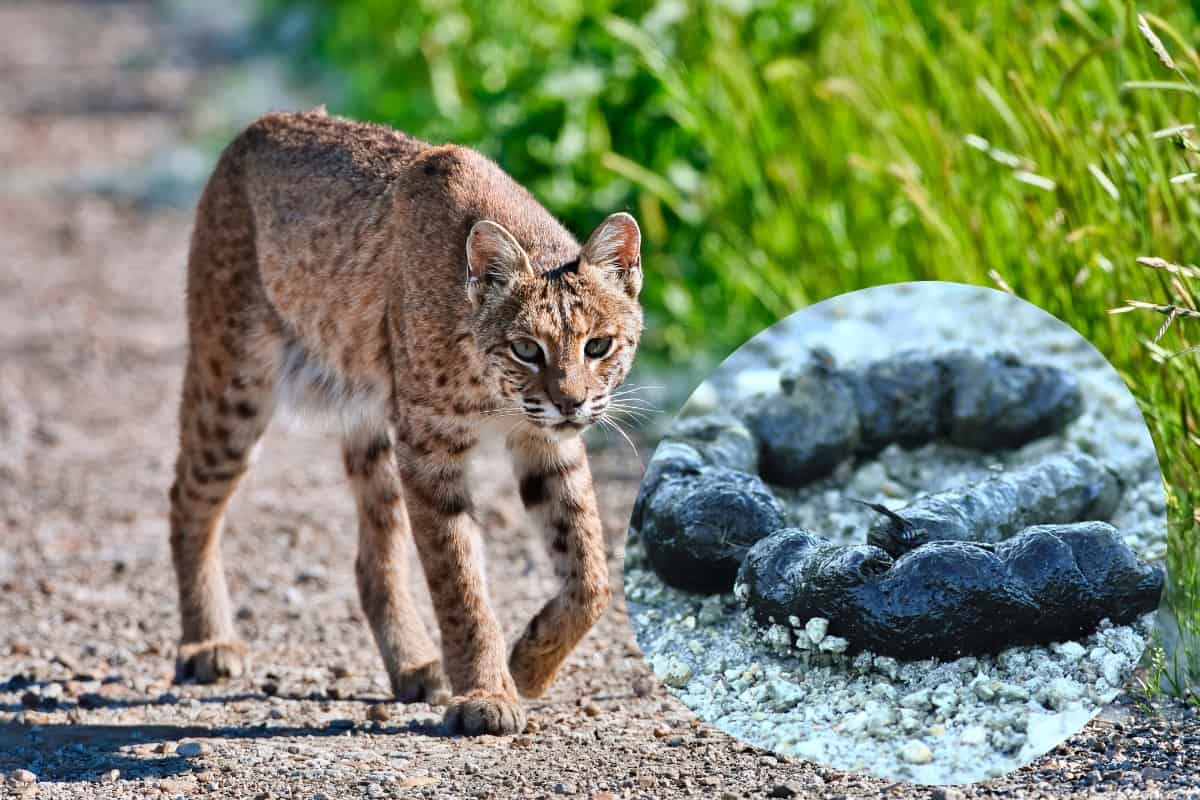
Contents
- Bobcat poop sightings
- What does bobcat poop look like?
- How does a bobcat’s poop smell?
- What do bobcats eat?
- Bobcat scat Identification
- Differences between bobcat’s poop and other animals’ droppings
- Is bobcat poop risky for human health?
- What kind of diseases the bobcat poop can spread?
- What should you do if you find any bobcats in your area?
- Frequently asked questions
- Conclusion
Bobcat poop sightings
Generally, animals drop their poop randomly anywhere in the wilderness but this is not applicable for bobcats as they utilize their poop such as feces and urine for marking their territory. You can also take it as a warning sign for other animals that they should not cross this line.
What does bobcat poop look like?
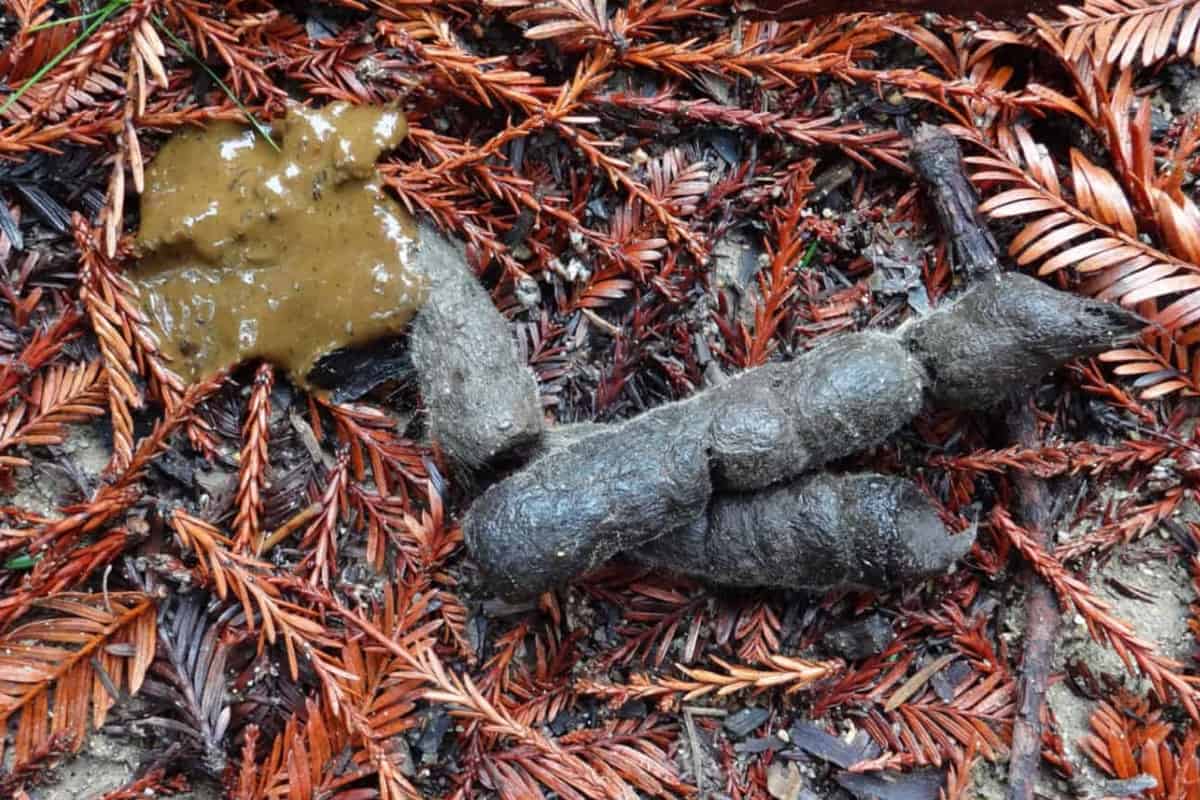
There are several ways to identify the poop of the bobcat. For instance, you can identify bobcat droppings through their sizes, shape, texture, and color. When it comes to texture, it depends upon whether the poop is wet or dry. If it is wet then you will find it quite smooth and shiny. If it is dry then it becomes very darkened and hard. If you find the bobcat feces in the wet form then you must assume that the bobcat is not far away from your location.
How does a bobcat’s poop smell?
The smell of a bobcat’s poop depends upon many factors like what is the diet of the bobcat and whether the poop is accompanied by urine or not. If bobcat poop becomes dry after a long time, then there are fewer chances of smell emission from poop.
However, if the bobcat poop is fresh and accompanied by urine then it will emit a pungent smell but if the bobcat poop is fresh without the inclusion of urine, then there will be a less pungent smell coming out from the poop. Normally, bobcat doesn’t leave their dirt uncovered and cover their scat with dirt, leaves, and soil.
What do bobcats eat?
Bobcats are carnivore mammals and like to eat a variety of diets. The diet of the bobcat depends upon the habitat and the availability of food. They could also go after large prey like deer if food is scarce. Generally, they love to eat small mammals like rabbits, mice, birds, hares, etc.
Bobcats come with excellent hearing as well as sighting senses. It helps them in hunting at night. They also like to stalk and ambush their prey. First, bobcats pounce on their prey and then pin them down and immediately attack the neck which is usually the weakest and the most vulnerable point of most animals.
If we look at the diet of bobcat region wise then they eat mostly red squirrels, mice, grouse, snowshoe hares, and white-tail deer in the snowy region and animals like rabbits, raccoons, lizards, and rock squirrels in the desert-type regions.
Bobcat scat Identification
There are several ways of identifying whether the poop belongs to a bobcat or some other animal. Here we have the following marks which could confirm the exact bobcat scat in any area.
- A fresh bobcat doesn’t come with a segmented appearance.
- There will never be two scats alike by a bobcat.
- There must be tracks of bobcats around the scat.
- You may find them scrape marks but never next to their scat.
- A specific scent might be a good indicator of identification.
- Bobcats normally deposit their droppings at the junction of trails same as foxes and coyotes.
- The last piece of scat must have a pointed tip and it could be a perfect indicator of canine scat.
- Bobcats also sometimes poop in the form of a segmented appearance with a blunt.
- It is also common for the bobcat to poop at the center of the road or trail.
Differences between bobcat’s poop and other animals’ droppings
Now, we are going to compare the bobcat’s scat with the droppings of other animals like mountain lions, hyenas, lions, badgers, foxes, lynxes, coyotes, hedgehogs, and bears. In this way, we can clear our confusion and we can easily pinpoint the poop of the exact animal.
How can you tell the difference between a coyote and a bobcat scat?
There are some similarities and differences between bobcats’ and coyotes’ poop. Generally speaking, a coyote’s poop is like a knotted rope having multiple pieces. The size of the coyote’s poop is almost 3-5 inches which is almost the same size as the size of bobcat’s poop and it also comes in a tubular shape same as a bobcat’s. Sometimes male coyotes excrete very long poop which could be as long as 12 inches. You will also find the bobcat scat curly, tapered and long. Sometimes you will also find some remnants of the fruits on the bobcat scat.
Bobcat poop vs hedgehog poop
Hedgehogs rely on insects and berries for their food. You can also find traces of these foods on the poop of these animals. As far as the shape of hedgehog poop is concerned, it is round shaped but very narrow in its thickness. Physically, you can also notice some shiny sausage on the poop of the hedgehog. But the poop of the bobcat is tubular in shape and it might be dry or wet.
Bobcat poop vs lynx poop
It is extremely difficult to identify the difference between the poop of a bobcat and a lynx. These are very much alike in their appearance. The poop of these animals is normally having the same shape in terms of thickness and length. There is also no difference in terms of the shine or color of poop. Both of these animals actually belong to the lynx genus, that’s why there are not many differences between the poops of these animals.
Poop: fox vs bobcat
Foxes are omnivore animals and mainly rely on animals like rodents, berries, small birds, and earthworms. They don’t digest their food properly and some of this food also remain in the poop. You can easily notice these undigested particles on this poop. Moreover, the poop of the fox is also quite shorter and thinner than the poop of the bobcat. It also comes with pointed ends. As far as the color of the poop is concerned, it comes in the range of brown to light tan.
Mountain lion poop vs bobcat poop
Mountain lions are bigger in size as compared to the bobcat. That’s why the poop of the mountain lion is also bigger than the bobcat’s poop. It is actually much bigger and thicker than the poop of the bobcat. On average, the length of the bobcat poop is almost 5 inches while the diameter is almost 1.25 inches.
You will also notice some similarities in the poop of mountain lions and bobcats. The poop of both of these animals has a segmented shape with some blunt ends. In the end, mountain lions also like to cover their scat with dirt, leaves, and soil. You may also find some bones and hairs of animals on their scat.
Bobcat poop vs bear poop
The poop of the bear is also tubular in shape same as bobcats. The poop of a bear also shows some resemblance with human excretion in terms of weight and thickness. The poop of the bear is almost 2 inches wide and weighs almost 1.5 pounds. The droppings of the bear may also come in a semi-liquid or watery form. It also depends upon the food of the bear which they take in their daily routine.
Bears are also omnivore animals like bobcats and love to eat meat as well as fruits. It depends upon the weather and the habitat they are living in. However, you can witness the traces of these fruits and food in their scat. One thing you must remember about the poop of a bear is that it doesn’t pose any health risk to human beings and other animals but the poop of a bobcat could be risky for health issues.
Is bobcat poop risky for human health?
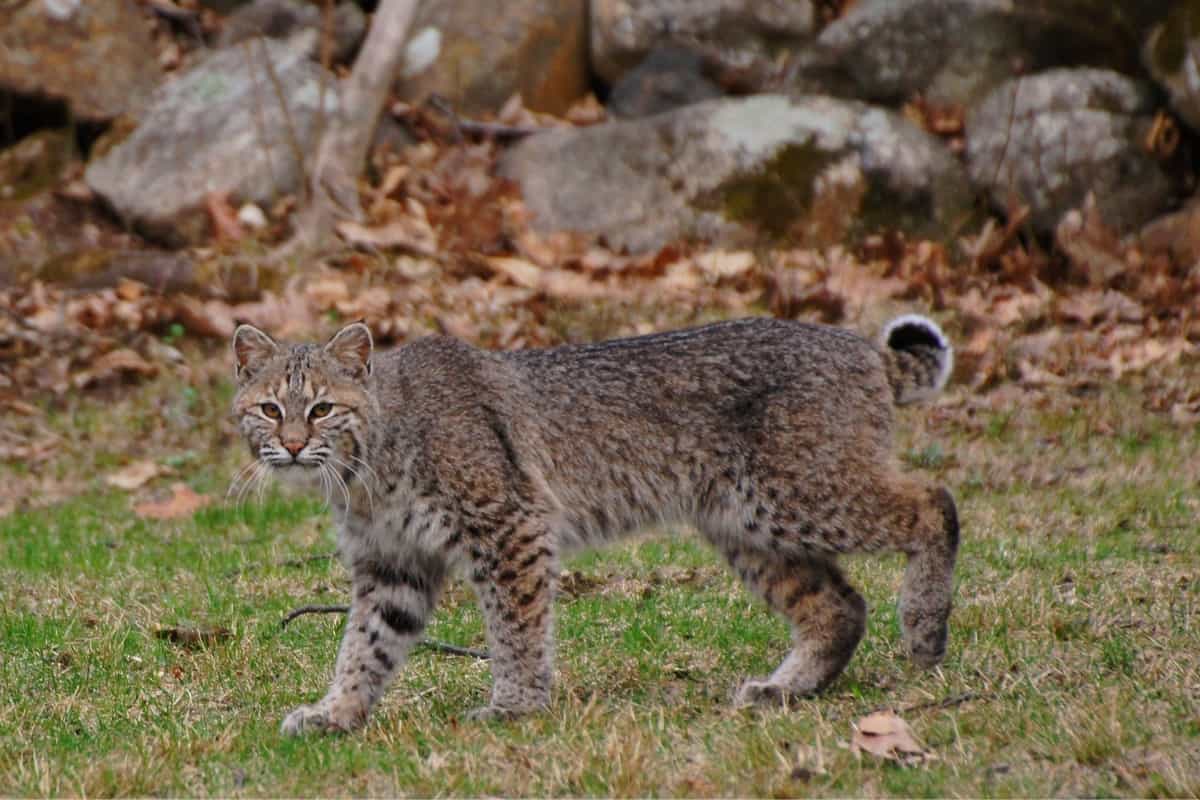
You can find traces of bobcat poop in many places in the wilderness. It might cause some health issues if we don’t take some precautions. Sometimes it could also pose some serious health risks for human beings as well as other animals. For humans and pets, the poop of bobcats has been the source of transferring diseases like toxoplasma gondii which would cause toxoplasmosis.
Some other serious diseases could spread due to the poop of the bobcat. Some of these diseases like beaver fever or giardiasis, cryptosporidiosis, and cytauxzoon felis or bobcat fever. You might have to face diseases like vomiting, diarrhea, stomach cramps, loss of appetite, and weight loss.
You must take all the necessary precautions while dealing with bobcat poop like using face masks, hand gloves, and a long stick. You must not touch your bare hands to the bobcat’s poop.
What kind of diseases the bobcat poop can spread?
If we come in close contact with bobcat scat, it could lead to several diseases like toxoplasmosis, bobcat fever, cryptosporidiosis, Giardiasis, or beaver fever, etc. let’s discover how these diseases could be transmitted in human beings and other animals.
Bobcat fever
It has been named a tick-borne disease. You may feel a lot of sluggishness and loss of appetite after affecting from this disease. It spreads very quickly in cats and in just 20 days of transmission, animals might show the symptoms of jaundice, temperature, dehydration, and respiratory disorder.
Toxoplasmosis
If the bobcat is suffering from the toxoplasma gondii parasite, then it is obvious that you will suffer from toxoplasmosis if you come in contact with the bobcat poop. Some of the common symptoms after from this disease could be fever, head and body aches, flu, swollen lymph nodes, etc.
You may also feel blurred vision, or some lung problems if you have a weak immune system or receiving chemotherapy or you have an organ transplant. Other than human beings, animals like pigs, sheep, cats, dogs, and goats sometimes also suffer from this parasite.
Cryptosporidiosis
A protozoan parasite commonly found in the bobcat scat. Under this disease, you might have to feel the symptoms of nausea, fever, stomach cramps, diarrhea, and frequent vomiting. Some pet dogs and cats have also been found suffering from this disease.
Giardiasis
It is a microscopic parasite that spreads through animal feces. It could severely infect your small intestine. Once you are infected with this disease and after almost two weeks, you might have the symptoms of nausea, loss of appetite, fatigue, vomiting, bloating, weight loss, and diarrhea. This disease spreads very quickly in cattle and pets like dogs, cats, sheep, goats, horses, and pigs.
What should you do if you find any bobcats in your area?
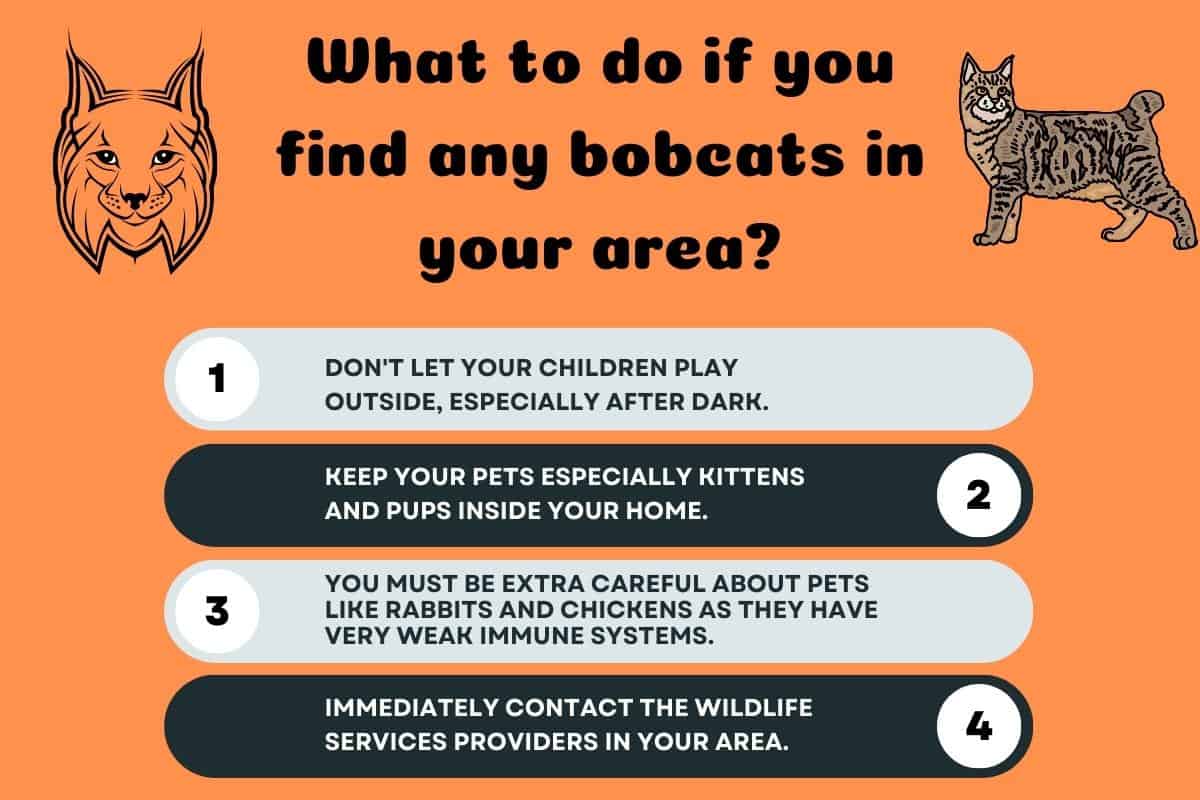
If you occasionally witness some bobcat scat or poop in your area, then you must be extra conscious about it as it could be extremely harmful. Bobcats usually avoid interaction with human beings. Nevertheless, if it is suffering from rabies then it becomes dangerous and definitely tries to attack humans, especially our defenseless children.
There is also the risk of spreading very harmful diseases through bobcat poop. Here we have some precautionary measures which you can adopt if you find a bobcat scat in your area.
- Don’t let your children play outside, especially after dark.
- Keep your pets especially kittens and pups inside your home.
- You must be extra careful about pets like rabbits and chickens as they have very weak immune systems.
- Immediately contact the wildlife services providers in your area.
Frequently asked questions
Conclusion
Bobcat poop has a lot of significance if you are tracing it in the wilderness or if you find it near your house. In the wilderness, you can reach the bobcat after pursuing the path of poop. If you find it in your surroundings, then you might be extra conscious about their presence and keep your pet animals as well as defenseless children in a well-protected territory.

Izzy is an experienced ranch worker who has a passion for exploring nature and getting up close to wildlife. With her connections to various animal organizations, Izzy is well-versed in animal care and rehabilitation.

